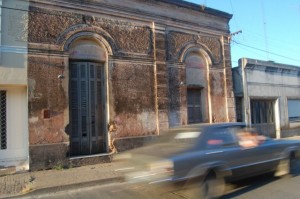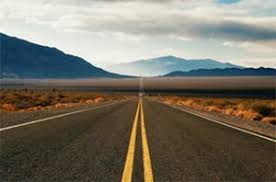


Argentina Driving Advice and Car Hire Info
Argentina Road Rules
Argentina drives on the right hand side of the road. If you have a photo ID licence from any of the following countries, you can use that to drive here for up to a year- All EU countries, Australia, Albania,Armenia,Belarus, Canada,Cyprus, Georgia,Israel, New Zealand,USA. Any other nationalities require their own licence plus an International Driving Permit. Speed limits are 120mh on highways, 80km on rural roads and 40-60kmh in urban areas.The blood alcohol level limit for drink driving is 0.05%. Dipped headlights is mandatory at all times on main roads.
Roads in Argentina
Argentina is a large country with over 230,000km of roads, around a third of which are paved. The country has an efficient and reasonably well maintained system of expressways and main highways, many of which are toll roads near urban areas. Major routes in the country are-
Ruta Nacional 9/RN9– which is part of the Pan American Highway -runs for 2000km from the center-east to the northwest of the country linking Buenos Aires- Rosario-Cordoba-Santiago del Estero-San Miguel de Tucumán-Salta and ending at La Quiaca in Jujuy Province,close to the Bolivia border. The road is a multi-lane motorway between Buenos Aires and Rosario.
Ruta Nacional 40/ RN40/La Caurenta – This is the longest road in Argentina at 5000km and crosses 20 national parks, 18 major rivers, and runs through the Andes reaching altitudes of 5061m at Abra de Acay, making it the highest national road in the world. The road begins at the Bolivian border at La Quiaca then turns south,and runs parallel to the Andes to Mendoza. From there it follows the Andes and heads South through the whole country before traversing the Patagonian Steppe and ending at Cabo Vírgenes lighthouse in the far south of Argentina.
Ruta Nacional 3 – This is a 3000km road which runs from Buenos Aires down the Atlantic Coast of Argentina to eventually arrive at Tierra del Fuego and Ushuaia. The road breaks at Santa Cruz province after 2600 km due to the presence of the Magellan Strait, which requires a 200km detour into Chile and the use of Chilean paved roads CH-255 and CH-257 and a 20 minute ferry crossing to cross the Strait.
As with most countries, once you get out of the big cities the driving is fine and main roads are generally in good condition, though rural roads and even some main roads, especially in the south will be gravel roads which can deteriorate after rain. A satnav would be useful in large urban areas.If arriving by boat from Uruguay, I would avoid collecting a car from the port as I did. There are a large number of multi-lane roads in the area and even with a satnav, it’s difficult to negotiate. I ended up employing a taxi driver to guide me out of the city after repeatedly getting lost!
Driving in Argentina
Driving style is generally fast and can seem quite aggressive in the main cities and concepts such as speed limit adherence and lane discipline seldom apply.You should drive confidentally but defensively and expect the unexpected from your fellow drivers. Care should be taken when driving in the Province of Misiones close to the borders with Paraguay and Brazil. The area is used to smuggle goods across the borders. It would be advisable to seek local advice if you intend to drive in this area.
Driving in Patagonia
Many visitors to Argentina opt for an adventurous self drive tour of the Patagonia region, which is shared with Chile. The roads in Patagonia are isolated, often with few other vehicles and may pass through areas of desert. You may also find that mobile phone coverage is patchy, so if you’re not mechanically minded you may need to call upon other drivers for assistance in the event of a breakdown. Some Spanish would therefore be useful. You also need to be aware that most of the time you will be driving on gravel/rubble roads. In Argentina, only Route 3, some segments of Route 40, Routes 22 and 237 to and past Neuquen and the road connecting Esquel with the coast, are paved. In Chile, only Route 9 from Punta Arenas and Route 5 North from Quellon are paved. The main dangers driving on gravel roads are the obvious potential for flat tyres and damage to the underside of the vehicle. Also the potential for stones to be thrown up by passing cars. If a car is approaching from the other direction, you should slow right down when passing to minimise the risk of stones being thrown up. You should always drive with both hands on the steering wheel so you remain in control in the event of a blown tyre. There is also the possibility for the wind to create grooves in the road which are difficult to see and which could damage your car if you hit them at speed. You should always proceed with caution therefore on gravel roads.
Distances between towns can be huge in Patagonia and you should always take the opportunity to fill up at every gas station- you never know how far it will be to the next one. You’ll be out of range of radio stations, and the often monotonous, flat landscape can get boring so check whether your rental car will have a CD/MP3 player and stock up on tunes if so!
Although I try and keep the information in the site updated as much as possible, in a rapidly moving world, situations can change daily. Therefore please use the site as an approximate guide, and in conjunction with other resources in order to form your view on driving conditions, roads, safety etc.
Argentina Car Rental –
Sixt, Hertz, Europcar, Alamo, National,Avis, Budget, Dollar,Thrifty, and large South American company Localiza have outlets here.
We currently have no local car rental partners in Argentina. If you are a local car rental company who would like to feature on DriverAbroad.com please check details on our Partnering page or contact us on ADriverAbroad@Outlook.com
Argentina Self Driving Rules –
if you are travelling to Rio Grande or Ushuaia in Tierra Del Fuego and renting your car in BA or another part of Argentina you will need to pass through Chile. Most firms will allow you to purchase a permit to allow this for around $120. Sixt will allow you to travel to Chile,Brazil and Uruguay with a special permit costing around $90 but you must request this 10 days in advance of the rental period.
For rentals in Patagonia most companies will allow you to take cars between Chile and Argentina though I’ve been unable to find a company offering one way rental between the two countries. To take the car across the border you will need to pay for additional insurance and generally book the car in advance (ie not a ‘walk in’) .Different companies seem to have different rules- for instance Hertz don’t allow Argentinian nationals to rent a car in Chile and take it into Argentina. Budget require the driver to have an International Driving Permit to cross the border with one of their cars. My advice would be to check out the specific rules used by the company you plan to use at the time of booking your car.

2 comments